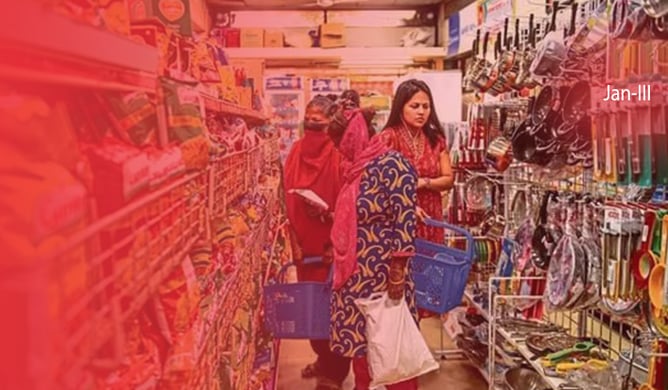
Goldman Sachs posits a straightforward yet compelling notion—India's affluent class will wield considerable influence over consumption patterns and may even shape product features. Presently, they project a cohort of 60 million individuals earning $10,000 (~₹8 lakhs) annually, with expectations of this figure ballooning to 100 million by 2027. When such a demographic transition occurs, discretionary consumption takes center stage. Suddenly, there's a surge in disposable incomes, fostering economic security and diminishing concerns about vulnerability. The heightened demand for online consumer goods, accelerated by the pandemic, is steering FMCG companies towards embracing direct-to-customer approaches and prioritizing digital channels for distribution.
This week’s edition of “Indian Retail at a glance” shares insightful articles on The rise of India’s affluent class? This is what the FMCG industry has in store for 2024?
All roads lead to Ayodhya, and FMCG firms are ready to go
Makers of packaged foods and beverages are ramping up supplies of their products in Ayodhya, as well as activating on-ground marketing campaigns, to capitalize on the surge in footfall the pilgrim town of north India is expected to see ahead of the temple inauguration on 22 January.
FMCG cos expect election year to stimulate rural demand
India's Fast Moving Consumer Goods (FMCG) companies are facing challenges in the rural markets owing to sluggish demand. The deficiency in rainfall in key agricultural states has disrupted the revival of rural demand seen in the first two quarters of the financial year.
Kirana Club targets 5 times growth next year
The company plans to tap into an estimated 13 million kirana stores that play a crucial role in the retail sector to achieve the target of $1,225 billion by FY26.
The rise of India’s affluent class?
Goldman Sachs’ central idea is simple — India’s affluent class is going to dictate consumption activity in the economy. They’re probably going to even determine product features. Right now, they estimate that there are 60 million people who earn $10,000 (~₹8 lakhs) annually. And they expect this population to grow to 100 million in 2027.
The pandemic impact: PepsiCo India lines up offerings for expansion
Beverage and snacks major PepsiCo India has expanded its product offerings with a slew of launches in its food portfolio over the past two years as in-home consumption increased during the pandemic which has continued for the brand.
This is what the FMCG industry has in store for 2024
The fast-moving consumer goods (FMCG) industry will undergo a transformative phase in 2024, shaped by the aftermath of several global events and changing consumer dynamics.
TCPL to tap pharma channels with Organic India, expand Capital Foods to oriental cuisine space.
Combined with its own brand Sampann, under which it offers Indian food and spice , TCPL now aims to offer a wide gamut of the Indian culinary palate with Ching's Secret, and Smith & Jones.
Meet family, who built Rs 17,223 crore company.
Every Indian, young or old, must have eaten Parle-G biscuits; this brand was a household favourite. The Chauhan family owns Parle, a company well-known for its FMCG offerings, which include the popular Hide&Seek, Marie, and other biscuit brands.


 2 minute read
2 minute read


